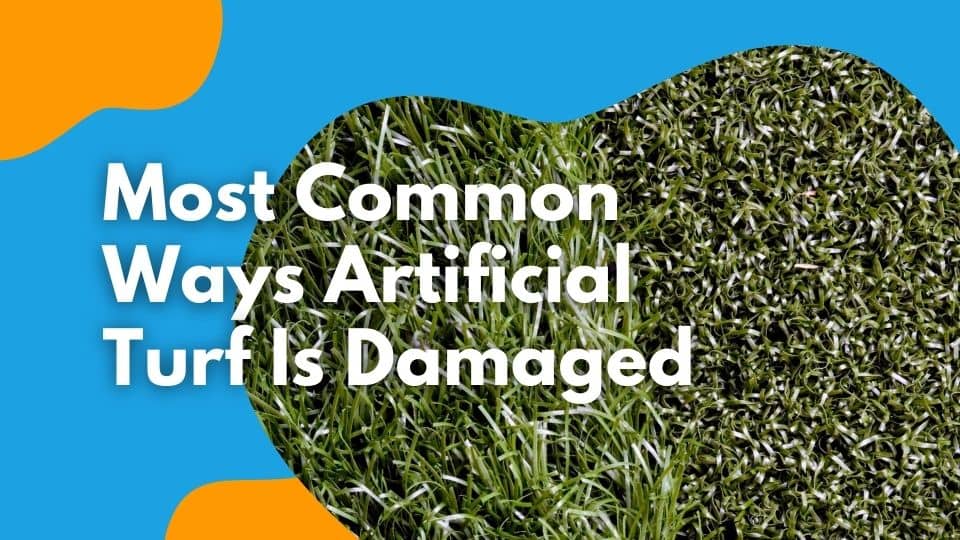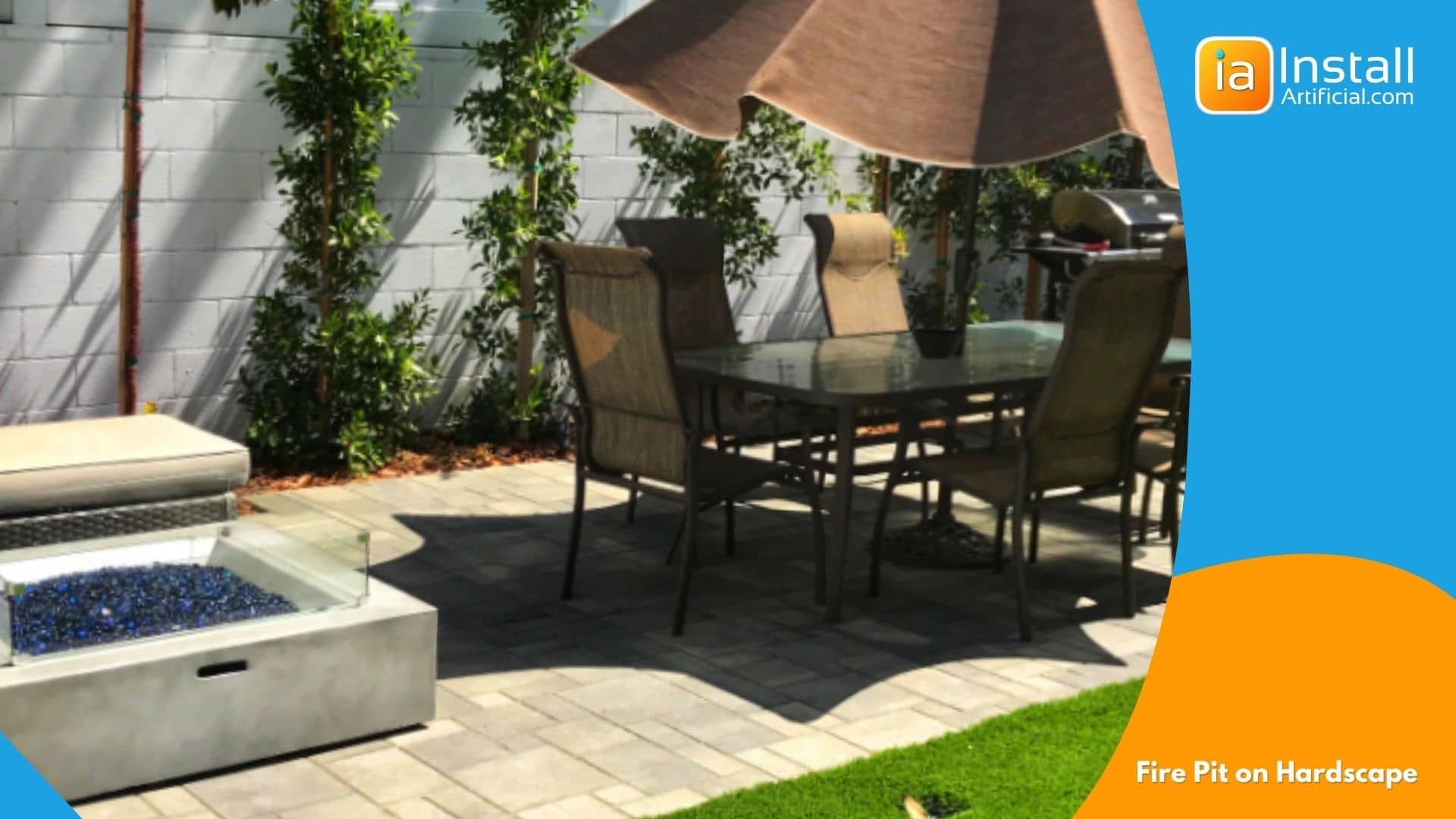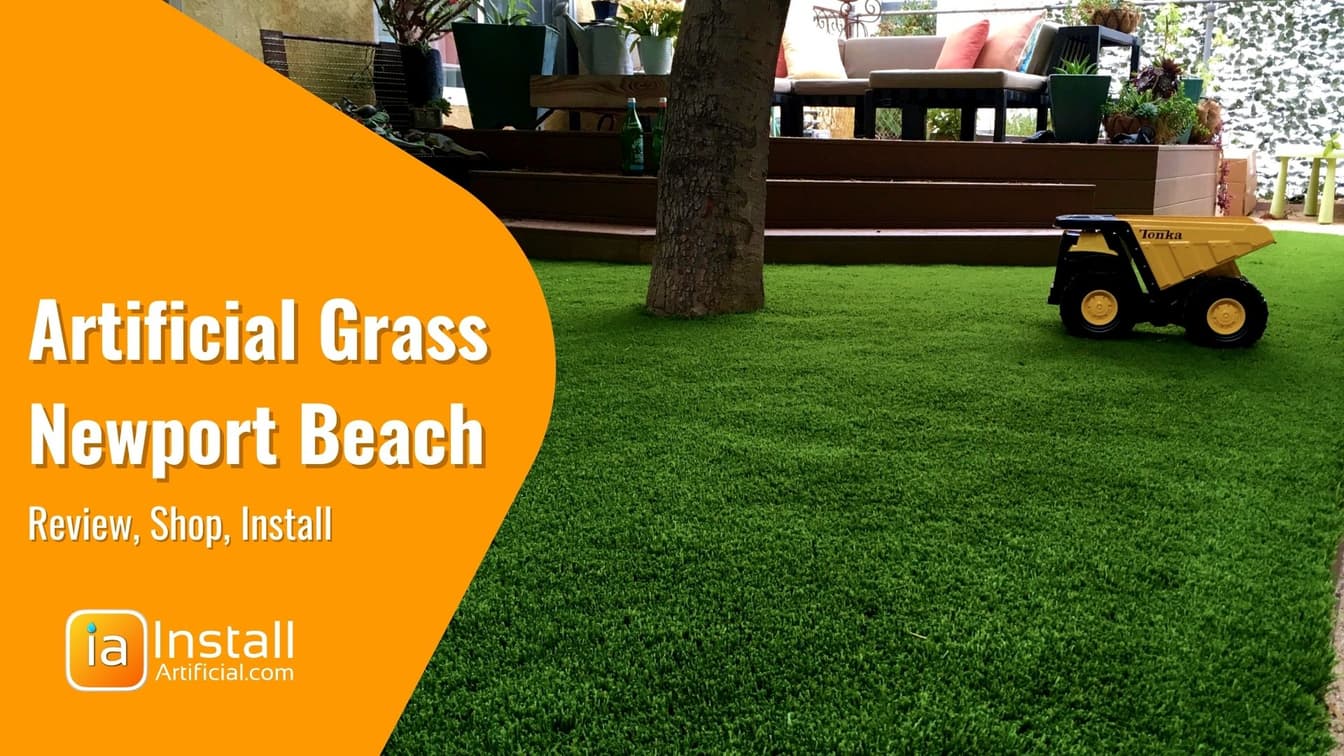Learn the most common ways that homeowners damage and compromise the life of their artificial grass. Hear what to avoid to lengthen the lifespan of your synthetic lawn and avoid premature turf replacement. Learn how to avoid costly repairs and take care of your investment!

Artificial turf is as durable as it is beautiful. You can keep it looking new for years and years, as long as you take the right steps to protect it. While artificial grass can greatly raise your property value, there are a few things that can damage this investment. Protect your artificial lawn and avoid accidental damage with this helpful information!
Harsh Chemicals
Artificial turf is easy to clean, but it can be ruined by toxic chemicals. You should never use petroleum-based products or oil-based paints near your grass because they can dissolve the blades and melt the backing if spilled and not cleaned correctly.
Can Paint Damage Artificial Grass?
Water-based paints and acrylics are safe to use, but you must clean up spills before they dry. If a spill occurs, wash the area with a mild cleansing agent immediately to remove as much of the solution as possible. When painting a fence near your grass, you should use a drop cloth just as you would in the house to avoid accidental spills.

Can Oil Damage Artificial Grass?
Polyethylene fibers in turf can be stained by oil, so oil spills on fake grass should be cleaned up as soon as possible. Oil residue may not completely come off, and can in certain cases stain the grass permanently. Remember: oils used in tiki torches are flammable and can cause a fire hazard if spilled onto artificial lawns.
Do Pesticides and Cleansers Damage Artificial Grass?
Heavy pesticides and harsh cleaning agents may also result in damage and discoloration if applied in large amounts. We'd recommend diluting any chlorine-based cleansers with water before applying them to the lawn.
Extreme Heat
Synthetic grass can't burn in the traditional sense, but it can melt when exposed to high heat. There are many common backyard amenities that are sources of fire and heat. With a few precautions in place, you're sure to steer clear of potential damage.
Can Fireplaces and Grills Damage Fake Grass?
One of the risks of heat damage on artificial lawns is outdoor fireplaces. Even if you keep it off of the turf surface, having a fireplace too close can still cause heat and smoke damage. Hot coals can also release embers that can travel and will melt synthetic blades. More commonly, grills can also become a hazard on artificial grass. Whether your grill uses charcoal, propane, or natural gas, grills are a source of heat and smoke that can damage the surface of your artificial lawn.
While fire pits and grills can enhance your backyard, It is important that you surround them with a hardscape perimeter or locate these amenities where they are not a threat to your artificial turf, as pictured below.

Can Fireworks or Ash Damage Fake Grass?
Cigarettes and cigars both produce ash, which can burn turf if there are any embers that fall onto the surface. It's an easy risk to overlook, but with the cost of turf installation being a fairly large investment, you'll want to avoid repairs. Similarly, ash and embers from fireworks will have the same effect near artificial grass.
Can Fake Grass Burn From Sun Reflections?
Magnification is the achilles heel for artificial grass installations. Second-floor windows, chrome finishings, bicycles, and more can cause sun reflections to occur. When this happens, the sunlight is more focused on a small area which can result in the melting of synthetic materials on hot days. To avoid this, be aware of sun reflections in your space and monitor the conditions under the mid-day sun.
Excessive Weight
Will Outdoor Furniture Damage Artificial Turf?
Heavyweight items can damage the structure of synthetic grass blades over time. Large and bulky items such as outdoor furniture and play sets should be moved every so often to prevent permanent indentations from occurring.
Does Heavy Foot Traffic Damage Artificial Turf?
Buying the wrong turf for your foot traffic is a major way to lose out on years of quality artificial grass. For areas with high foot traffic such as schools, dog runs, and commercial businesses, it's vital to opt for grass that is durable and resistant to heavy traffic.
The bounce-back rate of turf will change depending on the type of artificial grass you have. To have a quicker recovery rate, the best artificial grass will be durable and short. Taller grasses with soft pliable blades will require more brushing to recover and stand upright again. Plush artificial turf will also often show more permanent structure damage in a shorter amount of time.
Sharp Objects
What Objects Can Damage Synthetic Turf?
Probably the most common way turf is damaged is through sharp objects cutting or tearing the surface. Avoid this by ensuring all sharp objects stay away from your artificial turf. Rakes, shovels, spatulas, and knives can all cut through the turf backing. This can lead to snags and surface lifting in other areas.
If you must use these objects while outside, lay them down gently on the surface to avoid damaging your artificial lawn. Similarly, if you have lawn decorations that need to be spiked into the ground, find an alternative way to place them.
Now that you know what to avoid to keep your artificial lawn healthy, you'll have a high-quality green yard for years to come. Haven't quite made the switch? Get started today by filling out a short form to receive a custom estimate below!


